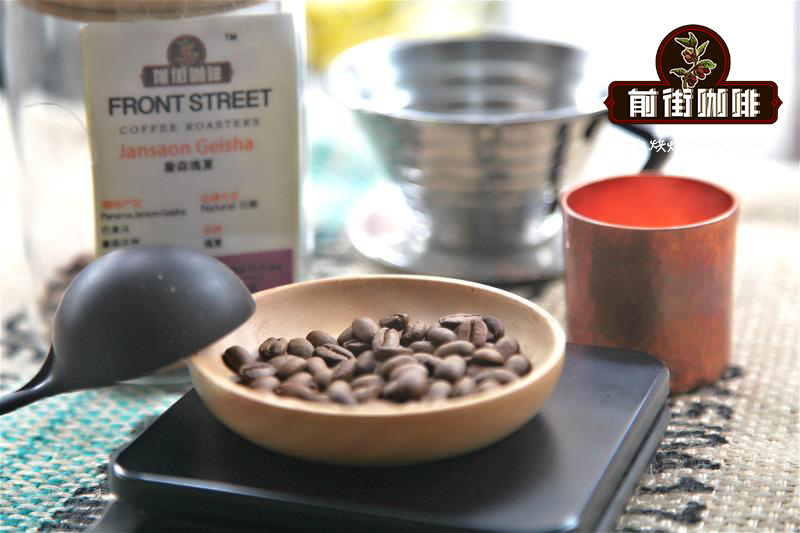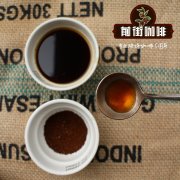American coffee what are the American coffee producing areas the characteristics of American coffee beans

Professional coffee knowledge exchange more coffee bean information please follow the coffee workshop (Wechat official account cafe_style)
Know Central American Coffee-
Central America is a land bridge connecting North and South America. There are seven countries, namely, Belize, Costa Rica, El Salvador, Guatemala, Honduras, Nicaragua and Panama. Seven Central American countries all produce coffee, with Guatemala, Costa Rica and Honduras among the top 10 coffee exporters in the world.
Coffee began to flourish in Central America in the 18th century, and this important economic product originated in Costa Rica around 1840. Since Central America became independent from Spain in 1821, there has been a lot of war. Because Costa Rica was far away from the Spanish colonial capital of Guatemala, it was not affected by the civil war. On the contrary, the production of coffee was delayed by the civil war in Guatemala and El Salvador. After that, the political dispute gradually subsided, and with the exception of Honduras, Central American countries began to produce coffee in the 19th century.
Central America has the natural advantages of sunshine, land, and mountains, and an abundant working population, which makes the region unique in growing and producing high-quality coffee. In the late 19th century, coffee had become an indicator of economic growth in Central American countries, and all Central American countries passed a bill to promote coffee. With the most remarkable results in countries such as Costa Rica, El Salvador and Guatemala, coupled with the scientific and technological way of growing coffee, Central America has become one of the four largest coffee producing areas in the world.
Guatemala also has tropical rain forests, volcanic geology, plateau valleys and changeable microclimate, coupled with several rainfall patterns and fertile soil, which make Guanguo coffee rich in flavor. With the establishment of the Coffee planting and Promotion Committee in 1845, coffee became an important cash crop in the region. Coffee accounted for 90% of Guatemala's total exports in 1880, and then suffered political upheaval in the 20th century, although agriculture was hit hard. but coffee production peaked in the millennium.
Generally speaking, there are five major producing areas of Guaguo coffee: Huehuetenango, Antigua, Cob á n, Atitl á n and Acatenango. The recommended ones are Vivette Nango, which has the highest altitude, less rainfall, late ripening, fruit and flower flavor, and is recognized as the best coffee producing area. The second is the Andi melon area, where coffee trees are planted at an altitude of 1300 to 1600 meters above sea level. the climate is dry and the aroma of coffee is uniform, with nutty, spicy and chocolate flavors. Generally speaking, Guanguo coffee taste slender, elegant, sweet, with fruit aroma, but also more complex, rich, rich, with chocolate, toffee aroma.
Honduras is currently the largest coffee producer in Central America, but the development of its coffee industry is much later than that of neighboring countries. In the 1800s, the development of national basic measures led to the coffee industry. In 1970, the government established an official organization, IHCAFE, to improve coffee quality, and set up coffee laboratories in the six producing areas defined by the agency to assist coffee producers.
Although the land in Hongguo is suitable for coffee cultivation, the extremely high rainfall makes drying very difficult. As a result, the flavor cannot be maintained when the sun is used in combination with machinery. Even if the coffee is dried, the hot climate will make it impossible for coffee beans to be preserved for a long time. It has become a major problem for Hongguo to solve. There are three main producing areas in Honduras, which produce more than half of the total value of coffee in Hongguo. One is Montecillos, the highest producing area in Hongguo. The coffee is bright and rich in texture with citrus aroma. Second, Copan (Copa á n): Copan beans all chocolate flavor, mellow taste, and high sweetness. Third, Agalta: the coffee beans in this area have tropical fruit aromas, sweet taste, balanced acidity and chocolate tonality. Generally speaking, Hongguo's coffee is considered to be gorgeous, fruity and sour, sometimes with nutty and taffy flavors.
Nicaragua is sparsely populated and is suitable for growing coffee because of its low altitude and steadier aroma than that of other Central American countries. From 1840 to 1940, during the period of "Coffee Boom" in Nepal, coffee became the main cash crop for export under the strong promotion of the government. In the late 20th century, when Nepal entered the communist rule, the coffee trade became very difficult. Under the triple attack of unstable times, powerful hurricanes and millennium drought, the output and reputation of Nepalese coffee have been dealt a heavy blow. In recent years, due to the shortage of funds for chemical fertilizers, coffee trees are mostly grown organically, and coffee farmers begin to focus on quality. Only by implementing the production and marketing resume system did Nepalese coffee show signs of recovery.
Coffee is complex in flavor and is often thought of as soft and flavored with cream, chocolate, fruit and almonds. Recommended producing areas are: Las Segovias, Jinotega and Matagalpa. These areas are about 700-1700m above sea level. Coffee beans are strong and dull in shape, with aromas of chocolate, caramel and almonds and typical Nicaraguan flavor. These beans have gradually attracted the attention of the international boutique community.
Important Notice :
前街咖啡 FrontStreet Coffee has moved to new addredd:
FrontStreet Coffee Address: 315,Donghua East Road,GuangZhou
Tel:020 38364473
- Prev

How to buy coffee beans in Africa? which country has the best coffee characteristics in Africa?
Professional coffee knowledge exchange more coffee bean information please follow the coffee workshop (Wechat official account cafe_style) below let's talk about what we need to know about imported coffee beans: importing enterprises need to have relevant business qualifications in order to import dried fruits: if they have a dried fruit wholesale license or food process license, or the enterprise industrial and commercial business license has dried fruit import and export.
- Next

Beginners learn coffee pull flower coffee pull flower skills why do you want to pour the jar
Professional coffee knowledge exchange More coffee bean information Please pay attention to coffee workshop (Weixin Official Accounts cafe_style) Coffee flower production method 1 Milk: the most important technology, although not very advanced but need a long time of practice, require milk foam delicate and smooth, go to do not have big milk foam. 2 The angle of milk: It is best to make milk at a 45-degree angle with the steam nozzle, according to the fluctuation
Related
- Beginners will see the "Coffee pull flower" guide!
- What is the difference between ice blog purified milk and ordinary milk coffee?
- Why is the Philippines the largest producer of crops in Liberia?
- For coffee extraction, should the fine powder be retained?
- How does extracted espresso fill pressed powder? How much strength does it take to press the powder?
- How to make jasmine cold extract coffee? Is the jasmine + latte good?
- Will this little toy really make the coffee taste better? How does Lily Drip affect coffee extraction?
- Will the action of slapping the filter cup also affect coffee extraction?
- What's the difference between powder-to-water ratio and powder-to-liquid ratio?
- What is the Ethiopian local species? What does it have to do with Heirloom native species?

